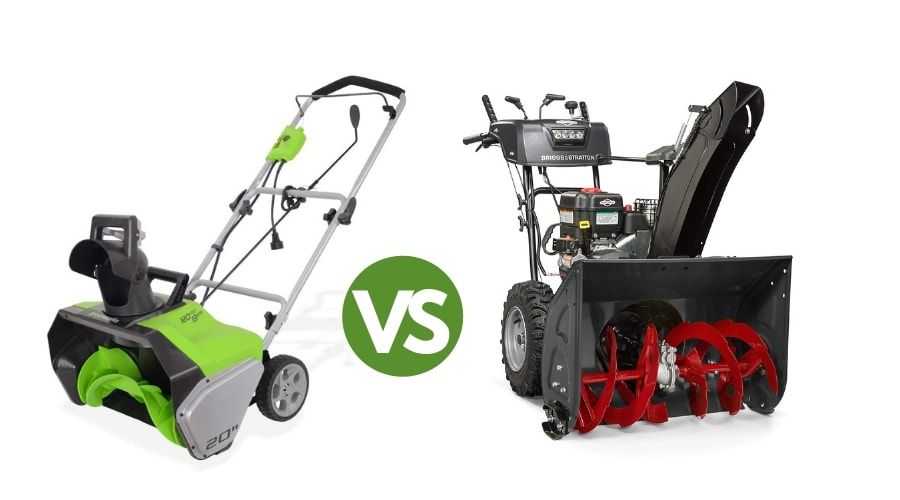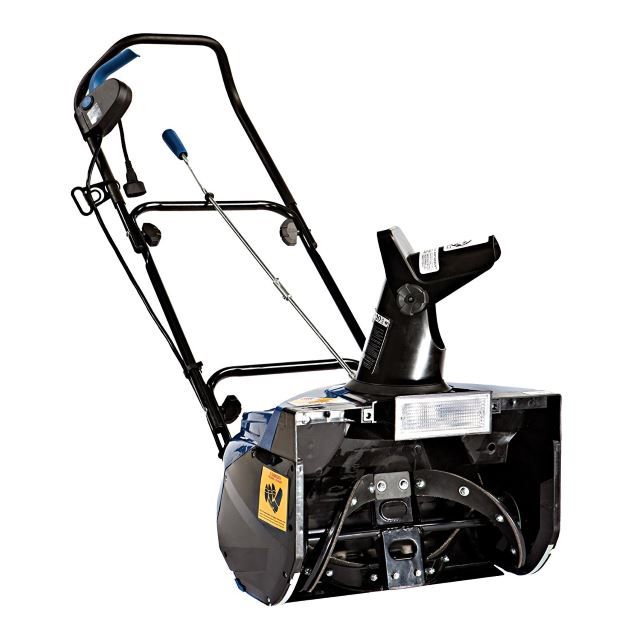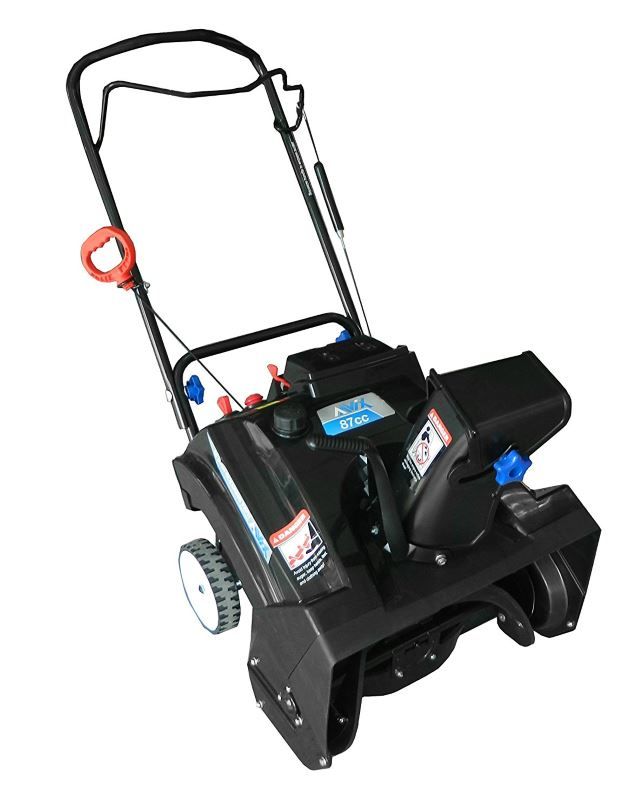It’s hard to believe that it is already almost that time of year again, but nothing is going to stop our days from getting shorter, and our temperatures from dropping until spring rolls back around. Our descent into winter means you may be planning out your last garden harvest, prepping your plants for the colder months, and winterizing your sprinkler systems, but this is also a great time to start looking over any tools you may need to get through the season.
Snow blowers are often an essential item for areas that get a lot of regular snow. After all, lifting and pushing around wet, heavy snow may seem like the ultimate workout, but it does get old pretty fast- plus at times it may not always be the best use of your time.
Snow blowers can help cut your winter maintenance time to a fraction of what you are used to, and if you have been considering a purchase of one, you've already discovered there are a variety of choices to choose from. One of your first questions may be, what is the difference between an electric snow blower vs a gas version? Today I’m going to break down that question for you below:
Electric Snow Blower vs Gas Comparison Table
|
Model |
Heat Quality |
Cost |
Availability |
Portable |
Mountable |
|---|---|---|---|---|---|
|
Propane |
~91,800 BTY/Gallon |
$$$$ |
Very Available |
Yes |
Yes |
|
Kerosene |
~135,000 BTU/Gallon |
$$$ |
Not as available |
Yes |
No |
Electric Snow Blower
PROS
- Lighter in weight
- Do not require gas or oil
- Very quiet
CONS
- Limited by cord length
- May overheat
- May not be able to handle a heavy load
Gas Snow Blower
PROS
- Very durable
- Variety of sizes
- No electric cords
CONS
- Needs regular maintenance
- Can be loud
- Extra cost of gas and oil
Electric Snow Blowers
Despite the fact that many people are unaware that electric snowblowers exist, they are widely available for purchase in many areas. They do have some specific requirements for use however, and before you decide they might be a good choice for you, you should determine if they truly can take care of the job it is needed for.
Electric snow blowers are just that, a tool that runs off electricity provided by your nearest outlet. These are popular choices for areas that only need minimal clearing of snow, are not too large in surface area, and also have the electricity available for use.
How They Work
The concept behind an electric snowblower is like any other electronic. You need to plug it in to power it up, and then use it as the directions entail. An auger helps move snow upwards, which is then pushed out and away from the area you are clearing through a chute. Hence the term snow blower.
There are a few variations in the electric designs; one being more of an electric shovel that clears only about 12 inches of width at a time with a very short, 4 to 6 inch clearance. Other versions can handle a bit more and have 12 to 21 inch widths with up to a 12 inch clearance. Both are handy tools to have for occasional, lighter amounts of snowfall and to help save your back when using a shovel.
Benefits
Electric snow blowers are quiet, more eco-friendly than gas-powered versions since they do not use gas or oil, and are also lighter weight and thus easier to store. Most also have a push button start so you don’t have to worry about wrenching out your arm pulling a cord to get it running.
Due to the specifications of an electric blower, they are a great resource for clearing off decks and patios, stairways, walkways, and shorter drives. They are handy, and often fairly inexpensive to have around for the occasional snow fall and make clearing out your yard a pretty quick job.
*You might also like: Power Smart DB5023 Electric Snow Blower Review.
Maintenance
Electric yard tools are pretty simplistic surrounding their maintenance. There are no liquids to be changed, no small parts to be cleaned, and in fact, other than a dusting off - there really is not much you actually can do to keep it running other than storing it properly in a dry place.
Keeping the cord untangled and free from anything that might cause fraying is important as well. When preparing for the season and checking to make sure everything is running correctly, you can also double check and test your power outlets.
Concerns
Due to the smaller, and lighter design of an electric snowblower, you definitely will not get the capabilities to move heavy, wet snow, or large amounts of snow at any given time. You also are very limited to working within the areas your machine can reach. Although some versions do allow for an extension cord to be used, it is not always suggested in order to get as much direct power as possible.
When working you also need to take care to avoid the power cord, as it could become tangled in the machinery, plus water and electricity do not mix well, so the cord needs to be checked for frays. You also need to be mindful of how much work you are doing at a time, as too heavy a load, over too long a time may cause it to overheat, or even burn out.
Gas Snow Blowers
Gas snow blowers are more widely available in a variety of options and from various manufacturers. They do, however, require some knowledge about their use and care, but can be an extremely helpful tool, especially in areas that receive high amounts of snowfall each year.
*You might also like: Best Husqarna Snow Blower Reviews?
How They Work
Gas snow blowers are either single stage, or dual stage designs, both of which have an auger that propels snow up through a chute to be thrown free of the area you are clearing. The dual stage design also includes an impeller behind the auger for more efficiency- which is helpful for heavy, wet snowfalls.
They use gas to power their engine, which also needs to be maintained using oil (to keep all the parts well lubricated), as well as a clean spark plug to allow for ignition.
Gas blowers can have a maximum width of 45 inches, with as much as 2 feet of clearance to take on heavy snowfalls. Plus many are self propelled, meaning you can exert even less energy clearing up to twice as much as an electric version.
Benefits
Gas snow blowers are incredibly durable and handle heavy snow with efficiency and ease. There are no electric cords to get in the way or restrict your movements or limit your area of coverage, and they come in a variety of sizes to fit any budget, ranging from 12 inches wide up to 45 inches. Plus, most models are self-propelled, as mentioned, making heavy work seem much easier to take on.
Gas blowers can cover a large area quickly, and move large amounts of snow with only one pass. Most chutes can also be pointed into chosen directions and also have adjustable heights to get the snow out of your way.
Maintenance
A gas blower has quite a bit of maintenance to consider, both when preparing for the winter season, as well as during the time it is in use. Unleaded gasoline and oil must be changed regularly, as well as maintenance surrounding spark plug cleaning and/or replacement. You also should check belts, pins, the paddles, air filter, and bolt tightness while in use, as well as before the start of the season. The fuel system should also be regularly maintained.
This is also much more bulky to store, and your gas and oil should be drained if you plan on letting it sit for any extended length of time. However, the payoff of a gas engine is that if anything goes wrong with it, it can most likely be fixed fairly easily. An electric motor is difficult to work on and it is usually cheaper to simply buy a new product rather than try to have it fixed.
Concerns
Outside of the maintenance that they require, they also are rather loud, bulky, and heavy to use. They also almost all start with a pull start system, so you have to be able to exert that kind of effort to get the motor started.
*You might also like: How to Start a Snowblower
Your Best Choice Explained
Your best choice obviously surrounds the type of work you need to get completed. Small areas of clearance in climates that have a lower snowfall would benefit from an electric version. Climates that receive regular snow, deeper snow, and properties that need more than about 50 square feet of clearance are better suited to a gas blower.
For long term use a gas blower is also a better choice as it can be maintained and stored, plus it is easier to have serviced if anything goes wrong. If you have any questions please comment below so we can get back to you, and as always, please share!
*You might also like: Snow Blower vs Snow Thrower: Which One Is Better?






